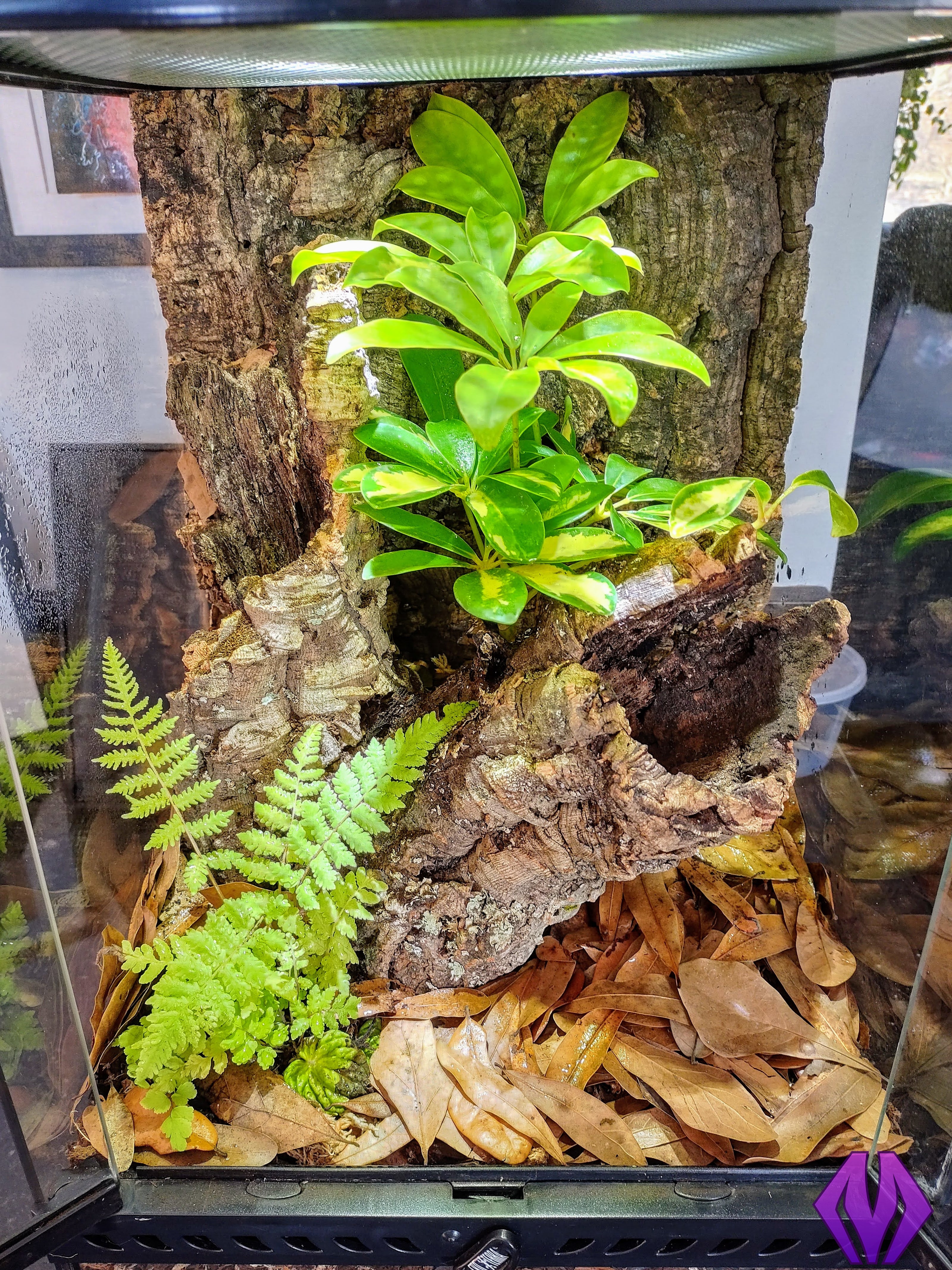Avicularia species care guide
note: we chose to lump together all Avicularia species into one care guide for the purposes of convenience, since captive care does not differ much between the different species. Some exceptions will be included.
description
the genus Avicularia is comprised of several arboreal tarantula species commonly referred to as “pinktoes” or “Avics”. These spiders are famous in the hobby for their generally docile nature and ease of care, but most importantly, their pinkish toe tips! Most species in this genus undergo dramatic coloration changes from spiderling to adult stage, with the exception of A. minatrix, which retain their juvenile coloration through adulthood. Average adult size can vary from 3" to over 6".
-

adult female A. avicularia
-

adult female A. minatrix
-

adult female A. purpurea
natural history
species in the genus Avicularia are found throughout Central and South America, where temperatures are generally very warm and humidity is high. Daily average temperatures are near-consistent 78-90°F. Rainfall varies seasonally and geographically but is generally plentiful. Humidity is very high year-round in the Amazonas (Amazon Rainforest Climate). Pinktoe tarantulas tend to live in hollows of trees and among vegetation. Read more about the different species and morphotypes in this cladistic analysis published in 2017 by Fukushima and Bertani. Many of the Avicularia varieties in the hobby are not formally described to science yet, such as Avicularia sp. Colombia.
-

unknown Avicularia species photographed in Peru
-

the rainforest of Guyana
"Guyanese Forest along the road ..." by berniedup is licensed under CC BY-SA 2.0
-

wild A. urticans, Peru
"Peruvian Pinktoe Tarantula - Avicularia urticans" by az3 is licensed under CC BY-NC-ND 2.0
enclosure design
most female Avicularia species max out at around 6” in diagonal leg span. The goliath pinktoe (A. braunshauseni) may reach 8”, and the dwarf pinktoe (A. minatrix) maxes out at around 3.5”. Mature males are usually a tad smaller. We set up all of our Avicularia adults in Exo Terra brand “Mini Tall” 12” x 12” x 18” glass enclosures, which we prefer due to their built-in cross-ventilation feature, double front-opening doors, locking mechanism, and clean look. The lid might pose an issue with tarantula claws getting stuck in the mesh, so consider replacing it with our PVC lid insert or replacement lid. We place a few cork bark pieces (hollow tubes are best) in a vertical position for hide options, fill the enclosure with 3-4” of megamix tropical substrate, plant a few foliage and vining plants, and provide a water dish. We set up spiderlings from 3/4”-2.5” in our XTALL spiderling enclosure similarly, and juveniles from about 2-4” are housed in Exo Terra brand “Nano Tall” 8” x 8” x 12” enclosures. Since A. minatrix rarely exceeds 3.5”, our adults are housed comfortably in the Exo Terra Nano Tall enclosures for life.
proper husbandry of this genus absolutely requires ample ventilation to prevent stagnant conditions, which can be improved with forced airflow. We keep a small portable fan in our spider room on the low setting. If you choose to use a fan, be sure to place it so it is not blowing directly at your enclosure.
maintenance
at Marshall Arachnids, we strive to take each species’ natural history into account when designing and maintaining vivaria for our spiders. We provide our Avicularia adults with a thermal gradient of about 76 to 84°F, with the top of the enclosure being the warmest during the daytime. Each spider has the opportunity to thermoregulate by moving around the enclosure as they please. We mist about every 2-3 days to provide fresh water droplets to drink from and to raise ambient humidity for live plants. We add water to the substrate for live plants and clean-up crew as needed. Change the water dish every other day, or as soon as it is soiled. For adults, we tong-feed appropriately-sized live dubia roaches or crickets every 7-14 days, but not on a set schedule. For slings, we offer food approximately every 5-7 days or as-needed. Avics tend to seal their hide off with webbing before and during molting; during this time, we are hands-off and do not offer food until the spider emerges post-molt. These spiders can safely go weeks on end without food, so do not be concerned if this is the case. Just continue to mist and provide clean water regularly.
We encourage keepers to avoid being mechanical about the care of their tarantulas. Note the relative abdomen size, molt rate, etc. when deciding whether to offer prey. Note the moisture level in the enclosure (is there condensation building up on the sides? Does the substrate appear damp? These may be signs that you are misting too heavily, or need to increase air flow/ventilation) and adjust your routine accordingly. Don't chase after specific humidity numbers, but do use them to inform how often to mist, because lower ambient humidity may lead to faster dehydration rates and vice versa. And lastly, when in doubt, avoid changing anything or disturbing the spider and reach out to us with questions!
fun fact!
the genus Avicularia translates to “pertaining to birds”. Although these spiders are not known for eating birds, the scientist who first discovered them claimed to have witnessed one feasting on a bird back in 1758. Because this was the first tarantula described to science, this nickname has persisted on despite the inaccuracy, and tarantulas are still referred to as “bird spiders” or "vogelspinnen" worldwide.









